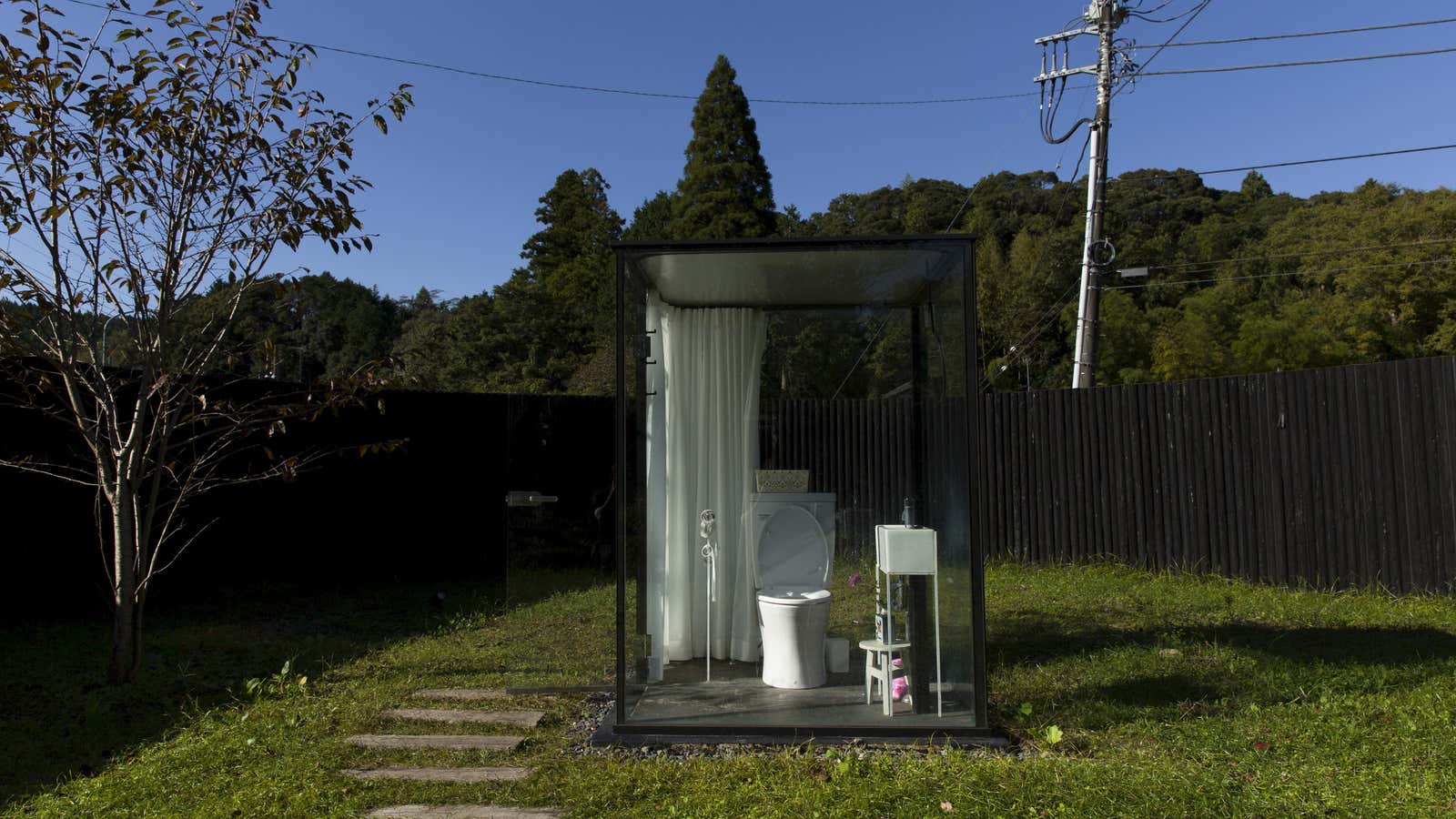There’s no shortage of wonders to photograph in Japan. But while most snap images of vibrant urban street life and colorful fashion, or cherry blossoms and snow-capped mountains, Tokyo-based photographer Hidefumi Nakamura has his eye on one of Japan’s lesser-appreciated gems: the public restroom.
Through his Instagram account “toilets_a_go_go,“ Nakamura has documented over 200 free-standing public toilets all over Japan, ranging from the nutty to the sublime.
Many of the standout WCs in Nakamura’s collection are in Tokyo. There’s the post-modern marvel in the ward of Chūō, a handsome loo in Iidabashi, a children’s toilet in Bunkyō, and the pink-and-grey bunker in Ueno Onsen Park that has the twee aesthetics of an “accidental Wes Anderson.”
Outside Japan’s capital, Nakamura’s findings include a brutalist bunker toilet in Toyama, a tiled typographic edifice at Okayama’s Oku railway station, and the incredible “tourist spot” restroom in Nagano.
“I love the diversity of Japanese toilets!” Nakamura told CNN. “Perhaps because the architects can do it freely.”
Nakamura’s finely-observed captions accompanying his Instagram photos highlight the ingenious architecture and engineering behind even some of the seemingly plain bathroom façades. In the caption for his image of the Hikawa Shrine in the Akasaka district of Tokyo, for instance, he hints at secret passages within the brick building:
A masterpiece with a tricky structure! At first glance, although it is a toilet embedded in the wall, go inside and there are stairs on the left as you proceed to the abutment, and go up to the precinct when you climb. From the inside of the precincts there is only a mysterious staircase leading to the basement.
Building on Japan’s global reputation for sophisticated toilets and bidets, the country’s government three years ago launched a tourism campaign encouraging businesses to improve public restrooms throughout the island nation. Citing omotenashi, the Japanese culture of hospitality, the government campaign also promoted Western-style loos over traditional squat toilets. Since 2015, the government has been spotlighting the country’s best loos in the “Japan Toilet Grand Prize,” to encourage innovations in toilet technology in time for the 2020 summer Olympics in Tokyo. Another major bathroom-related public-works project is to retrofit public restrooms with accessibility features for Japan’s aging population. Toilets at the Narita Airport, for instance, are now equipped with several “universal design” features including Braille, voice guides, and extra-wide stalls for wheelchairs.

A new focus on the aesthetics of the bathroom isn’t isolated to Japan. City planners and entrepreneurs around the world are now investing in photogenic public toilets, in part due to the proliferation of bathroom selfies on Instagram. In the introduction to Toilets: A Spotter’s Guide, Lonely Planet editor Patrick Kinsella expounds on the communicative value of beautiful toilets. “As any experienced traveller knows, you can tell a whole lot about a place by its bathrooms,” he writes. “Whatever you prefer to call them—lavatory, loo, bog, khasi, thunderbox, dunny, bathroom, restroom, washroom or water closet—toilets are a (sometimes opaque, often wide-open) window into the secret soul of a destination.”
